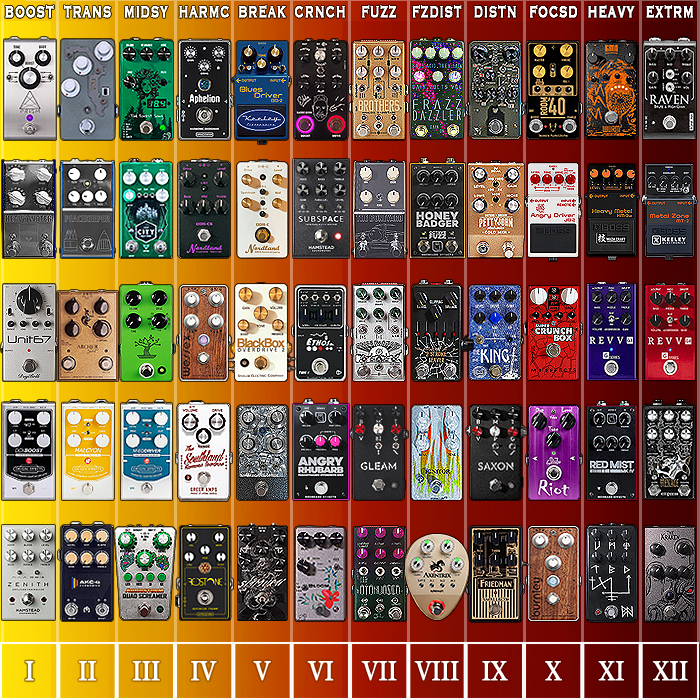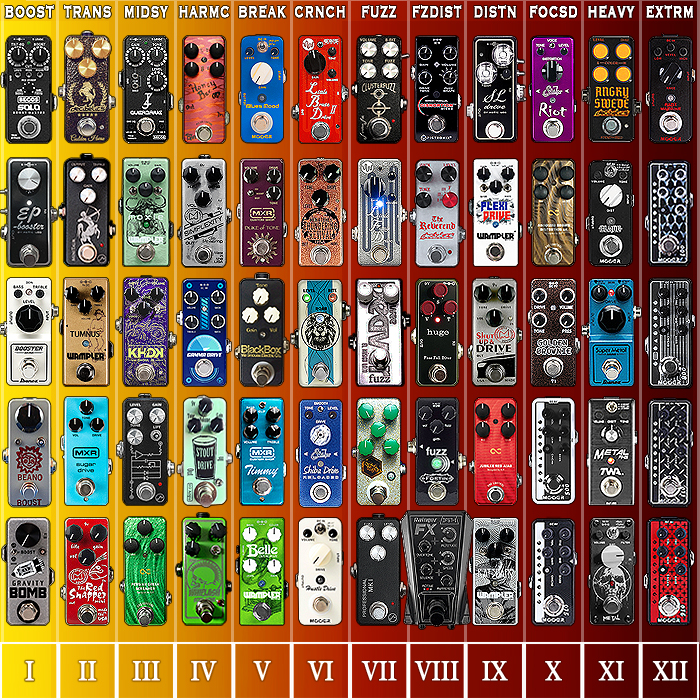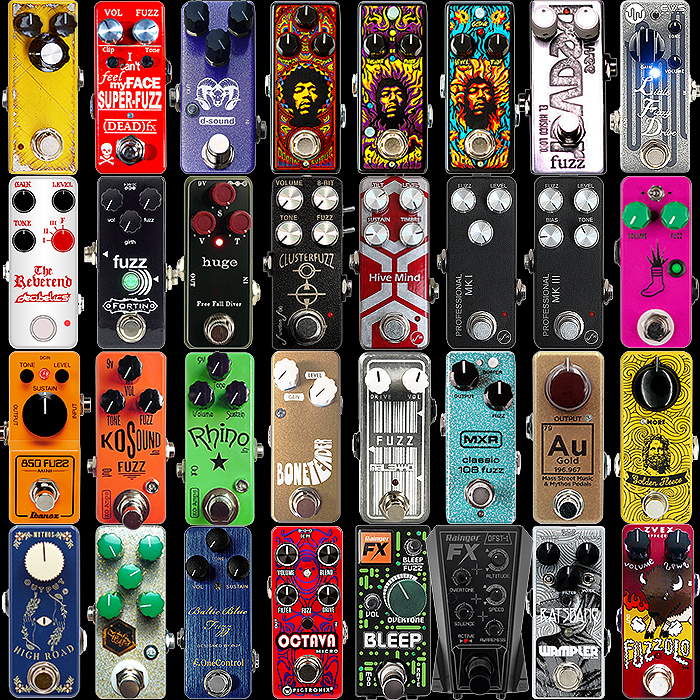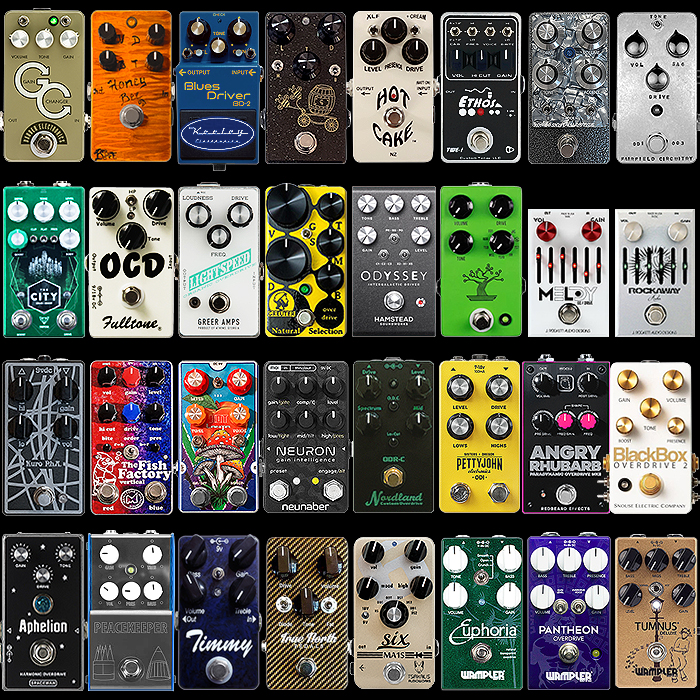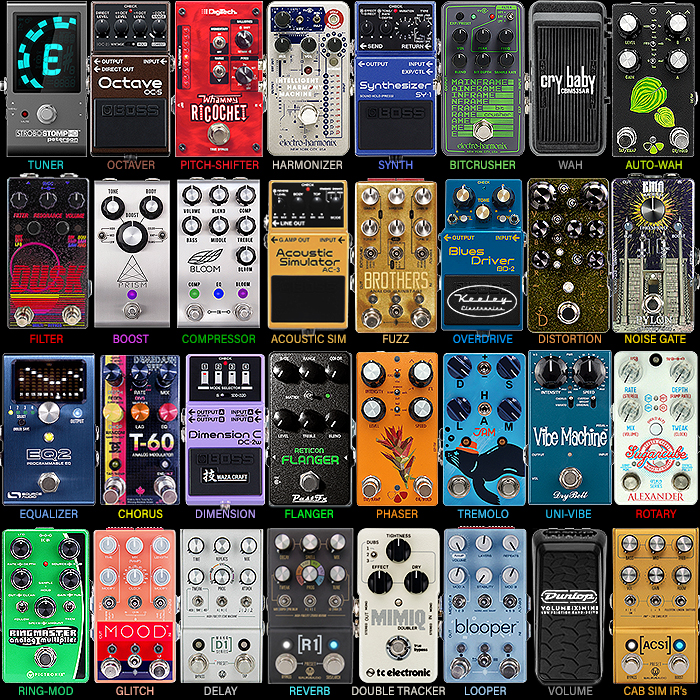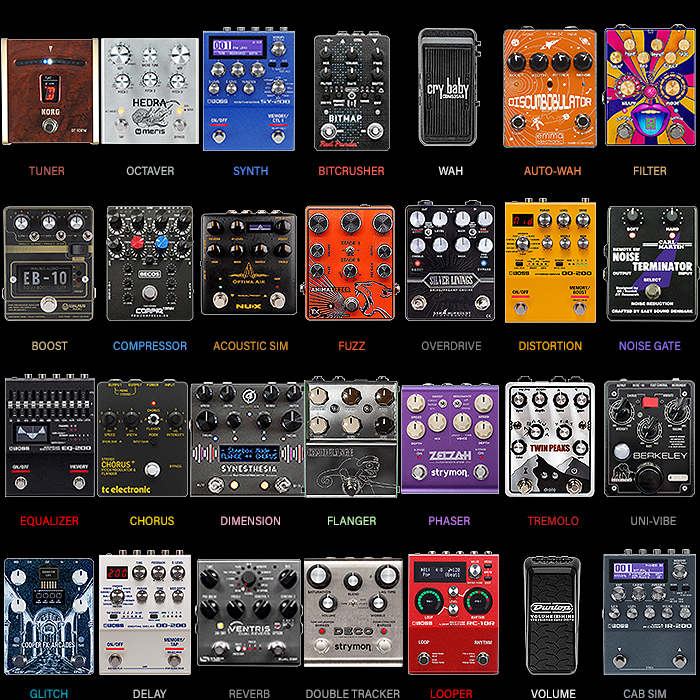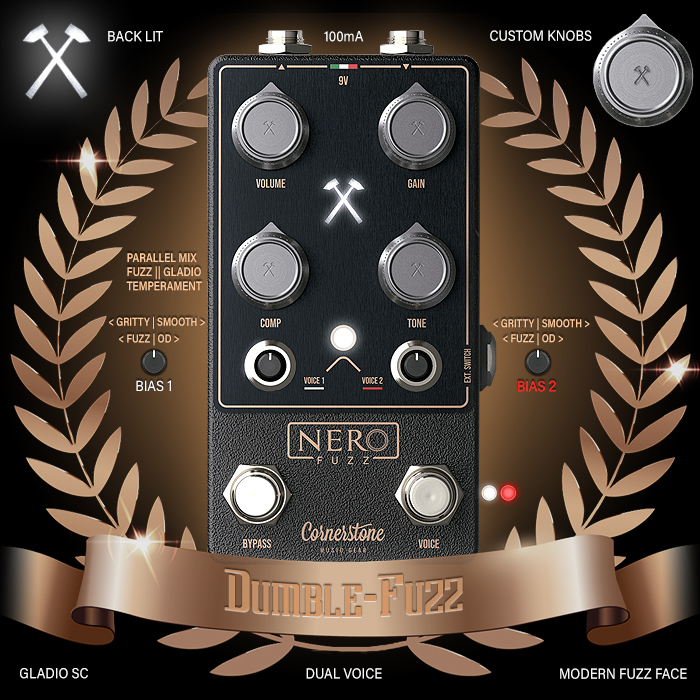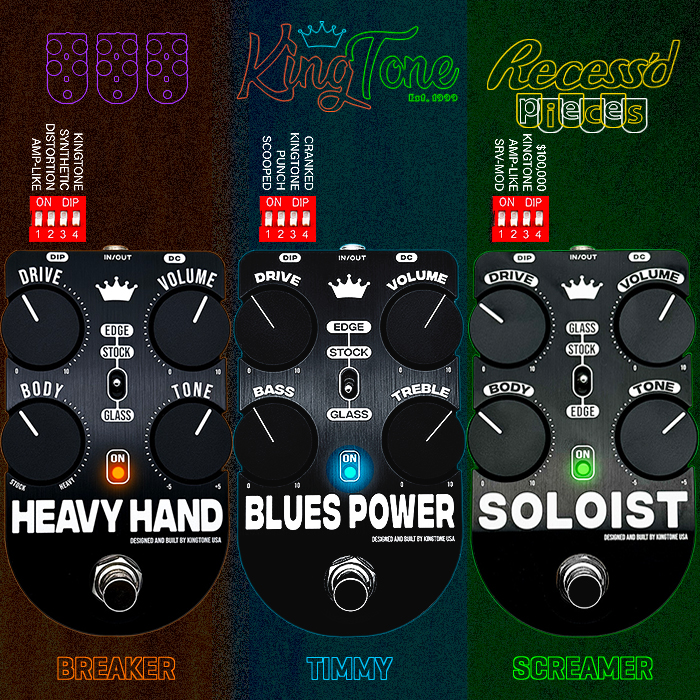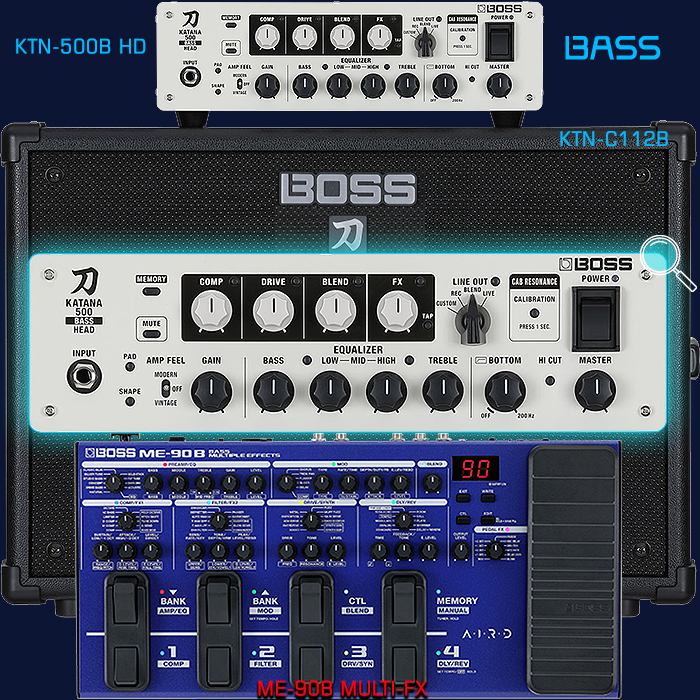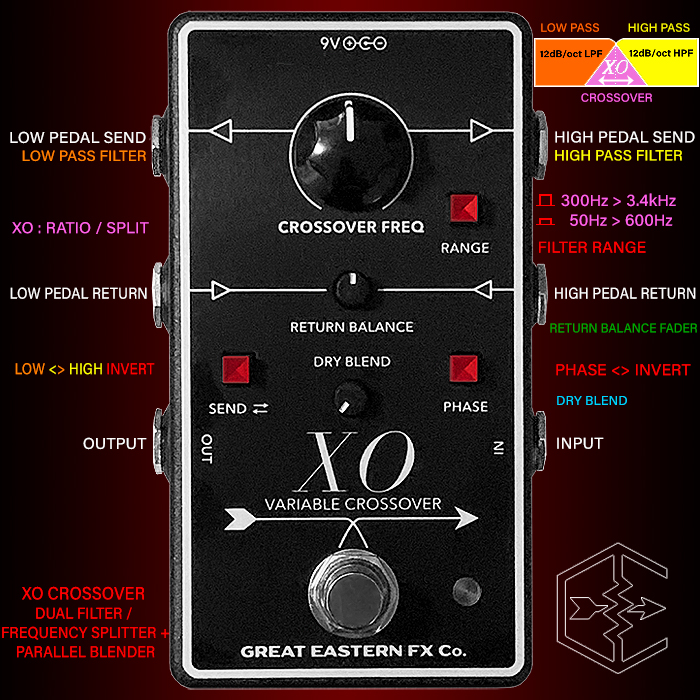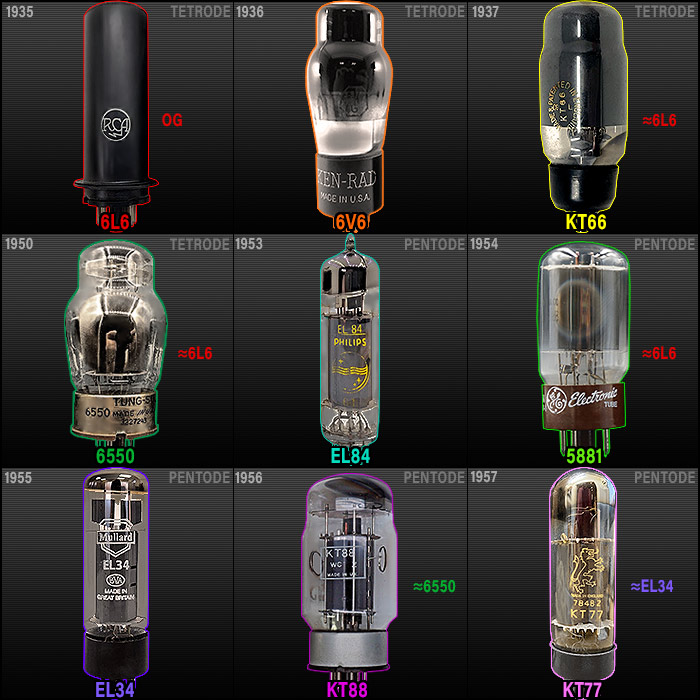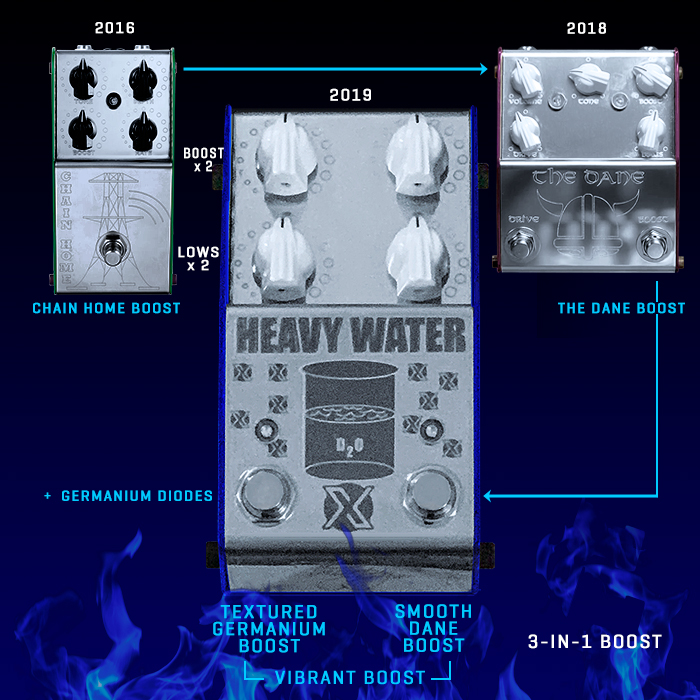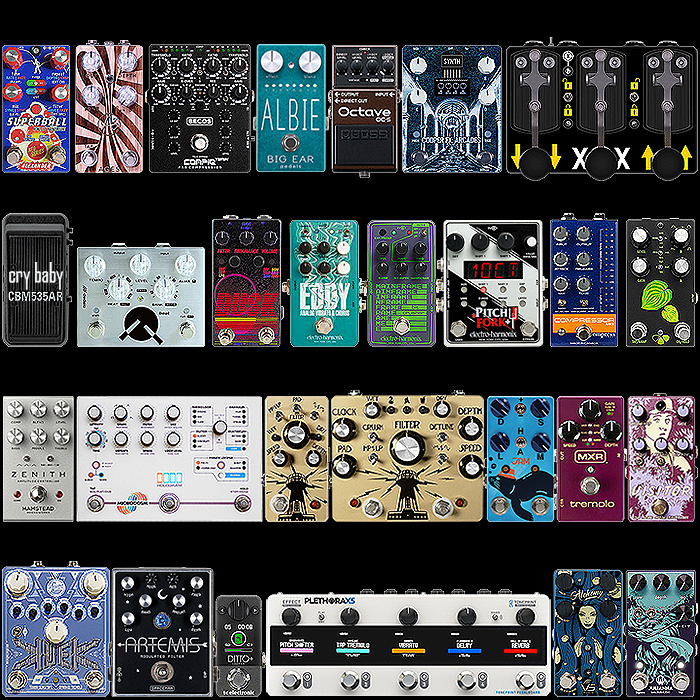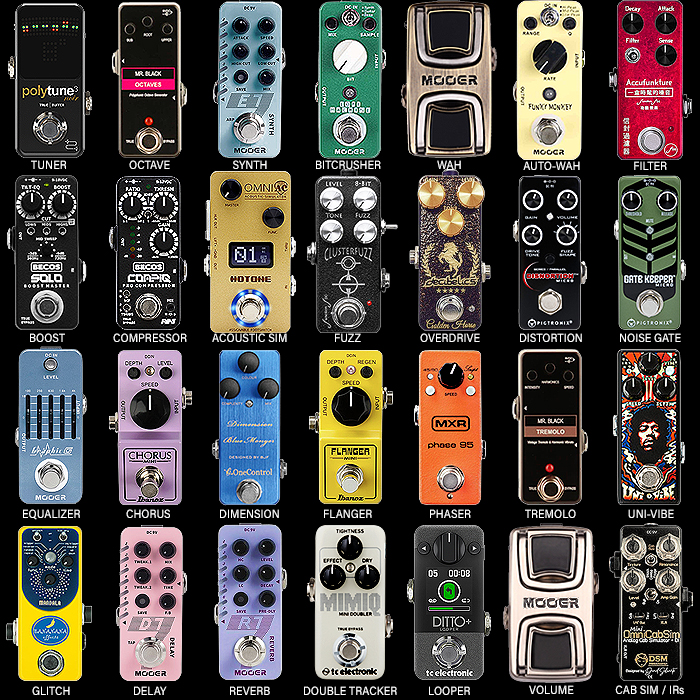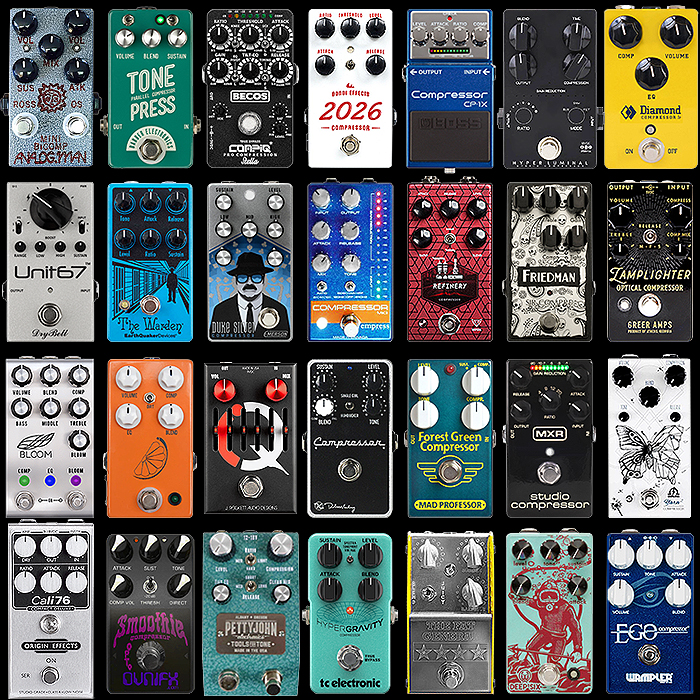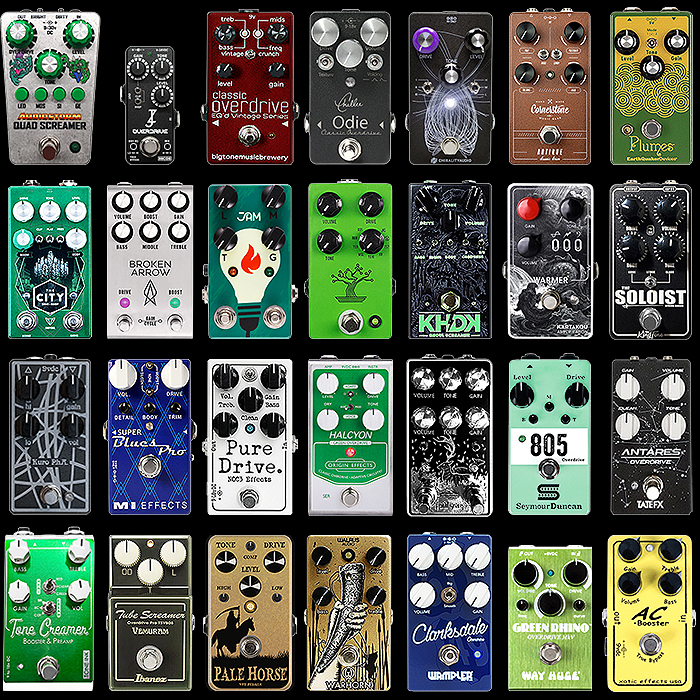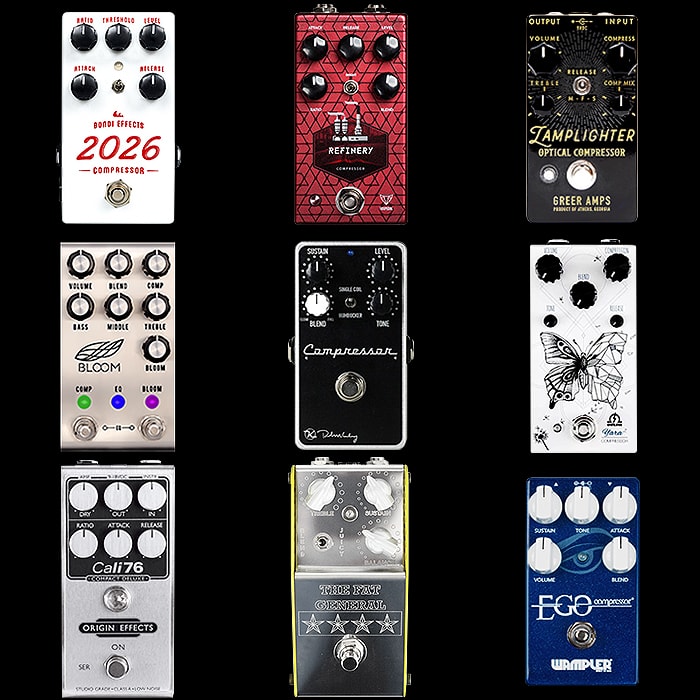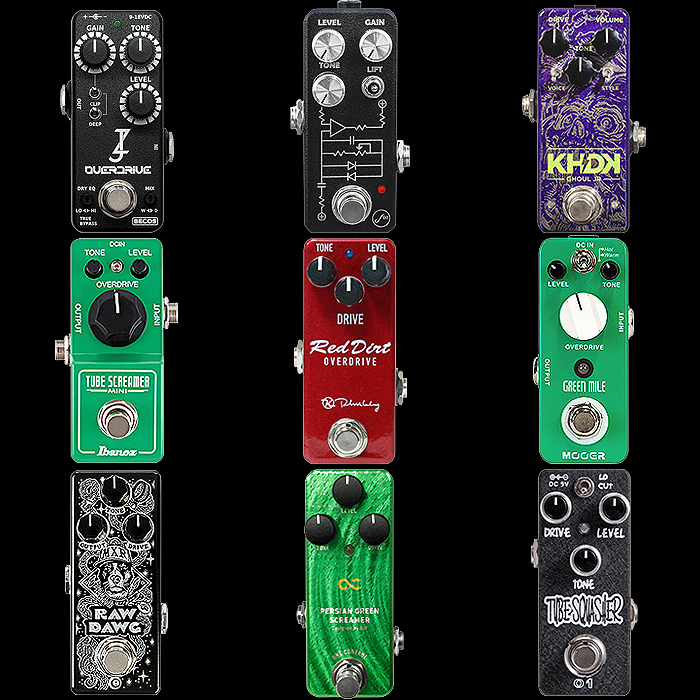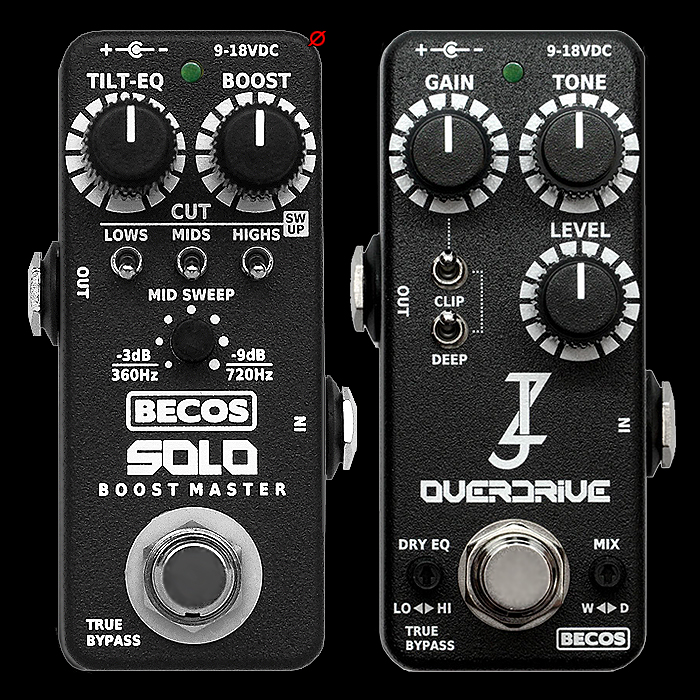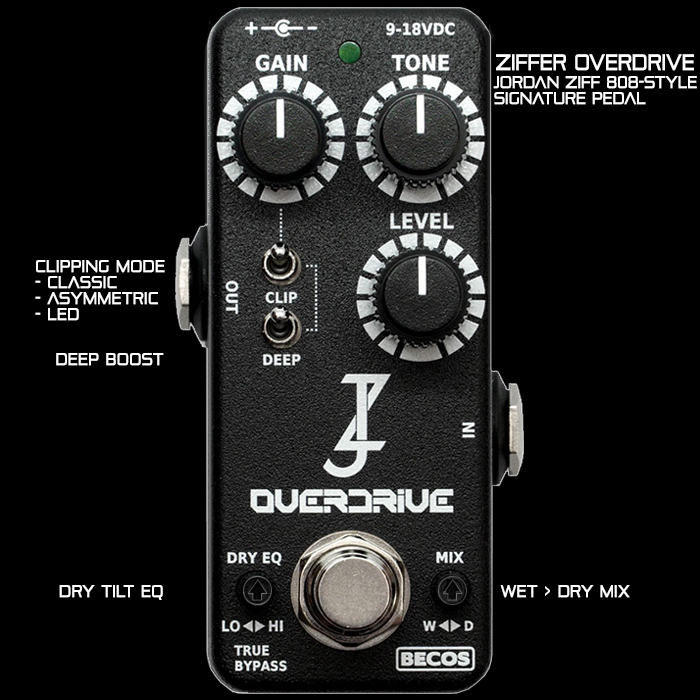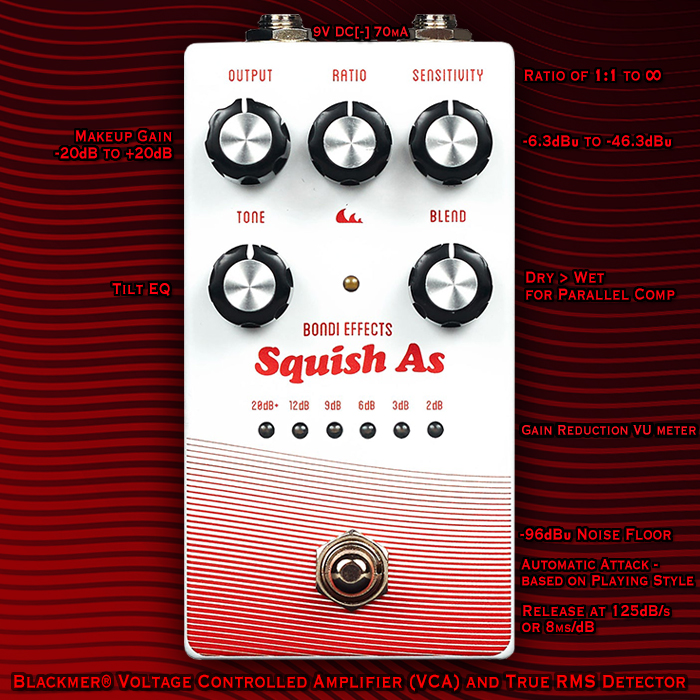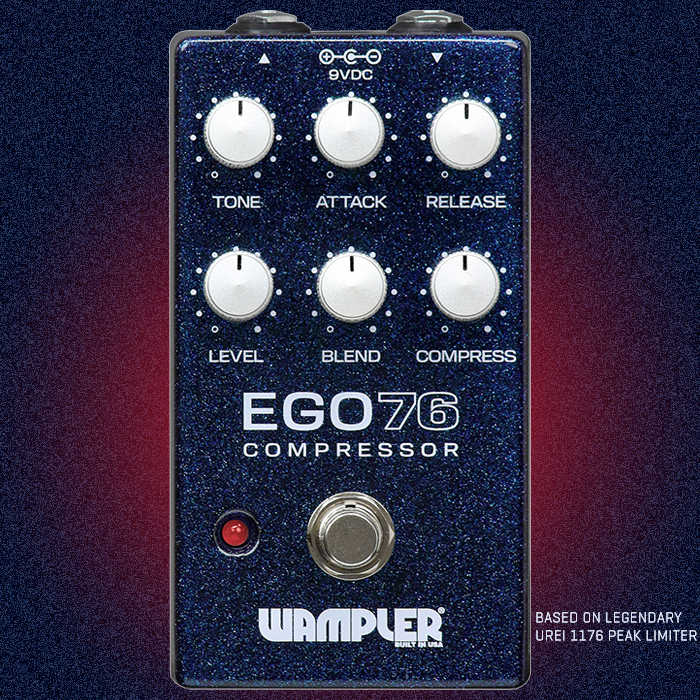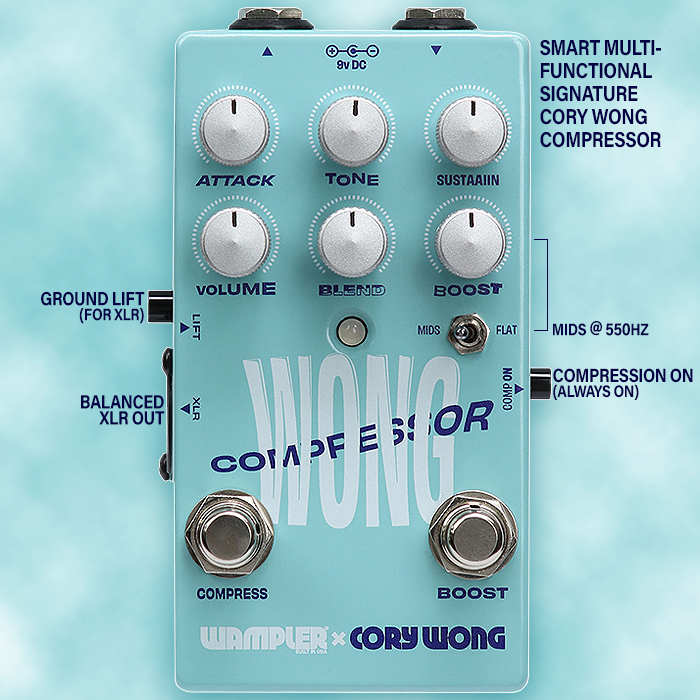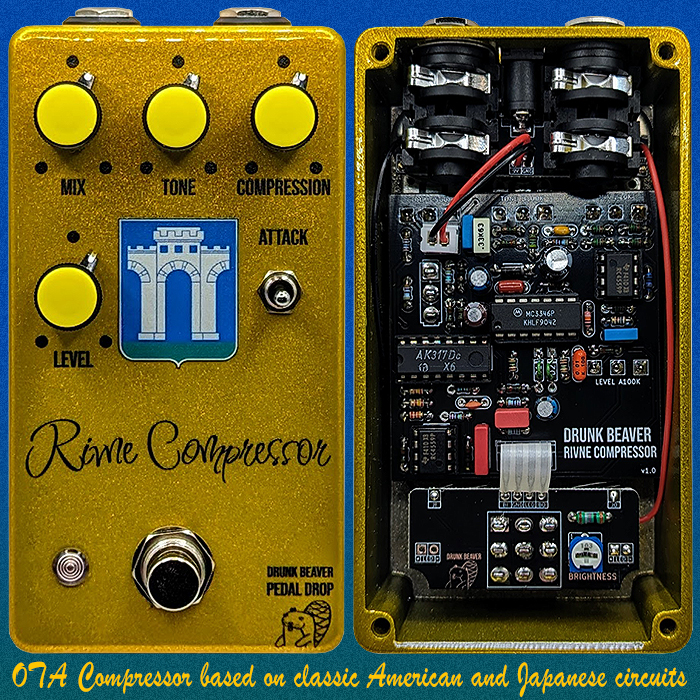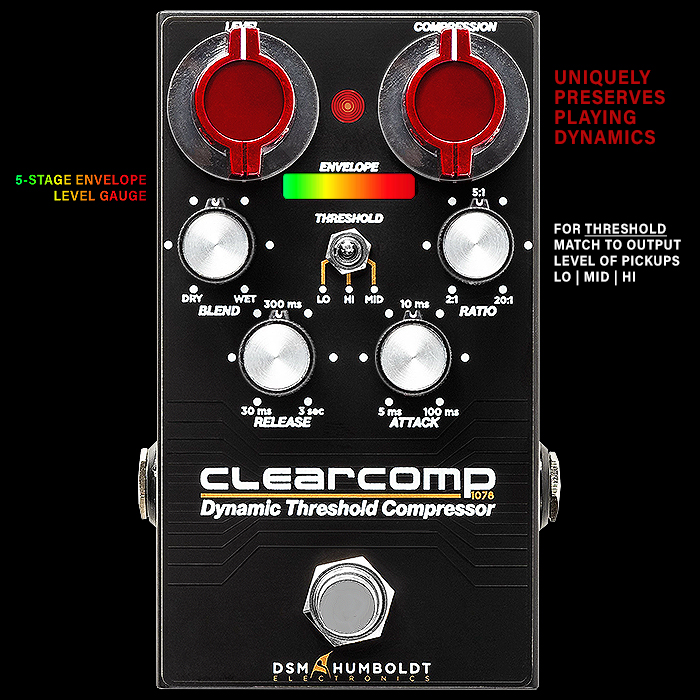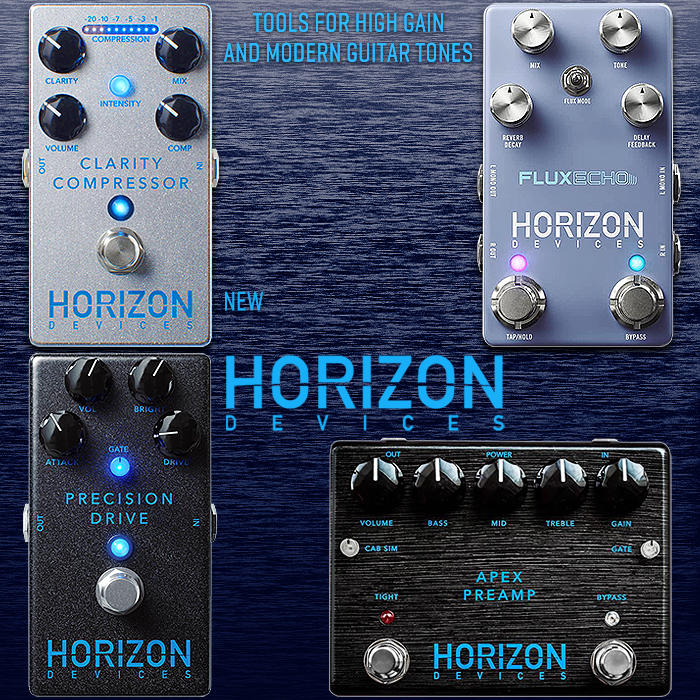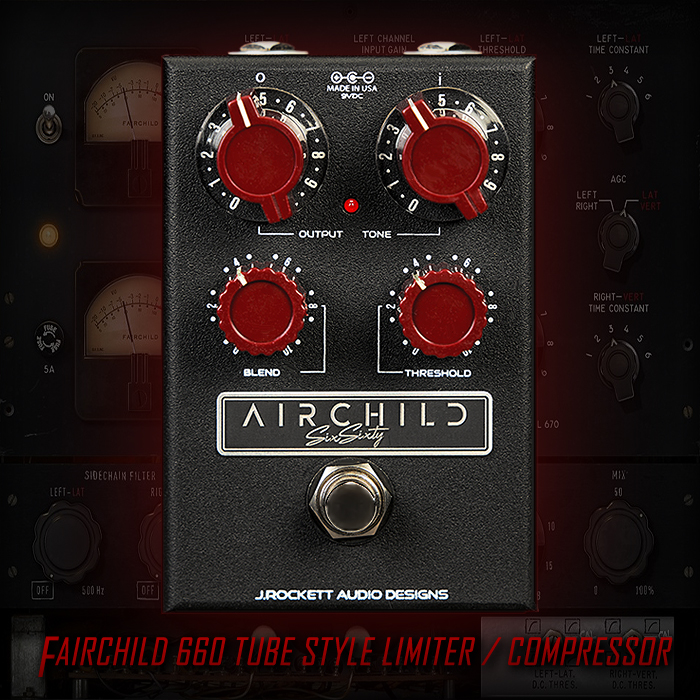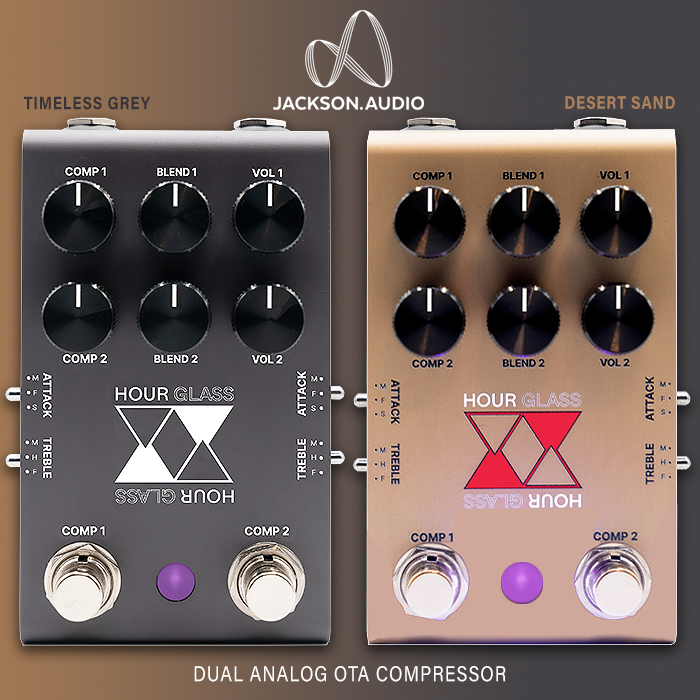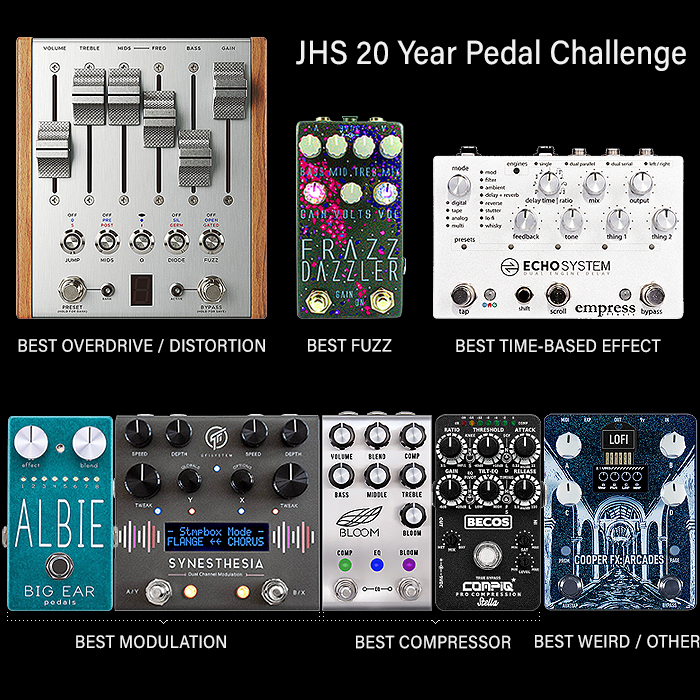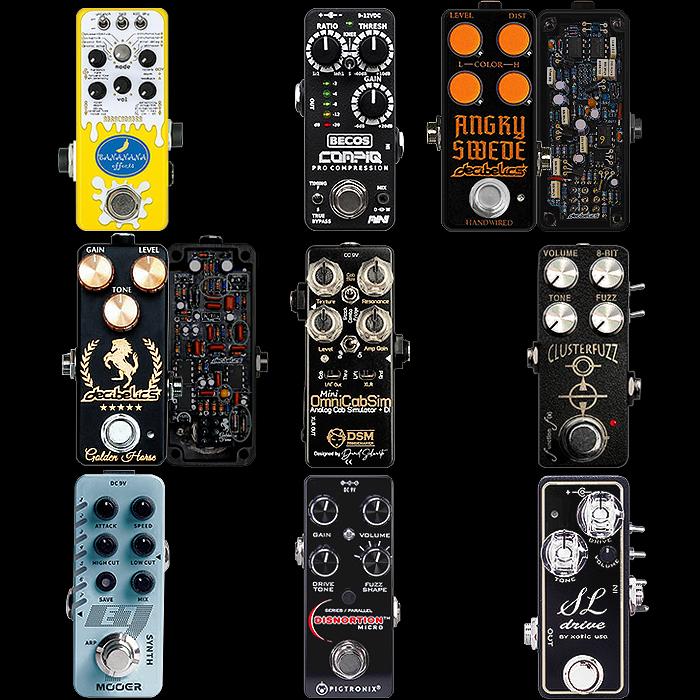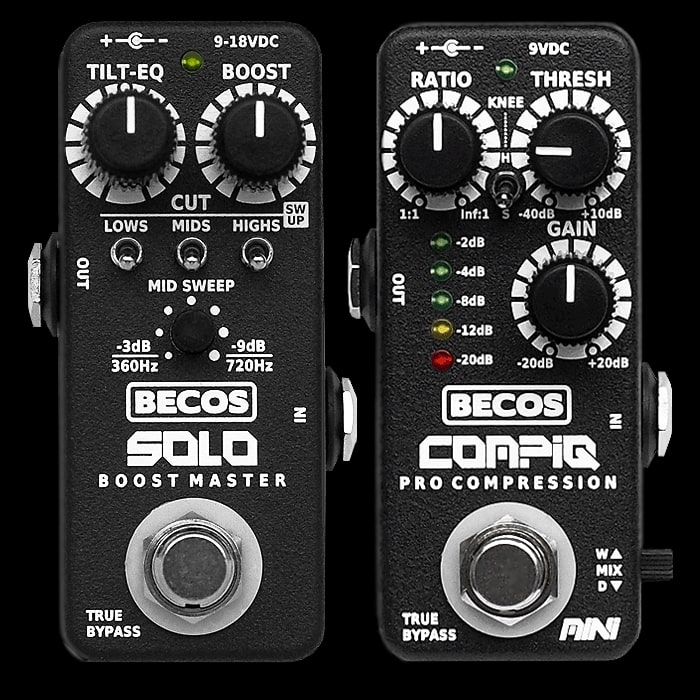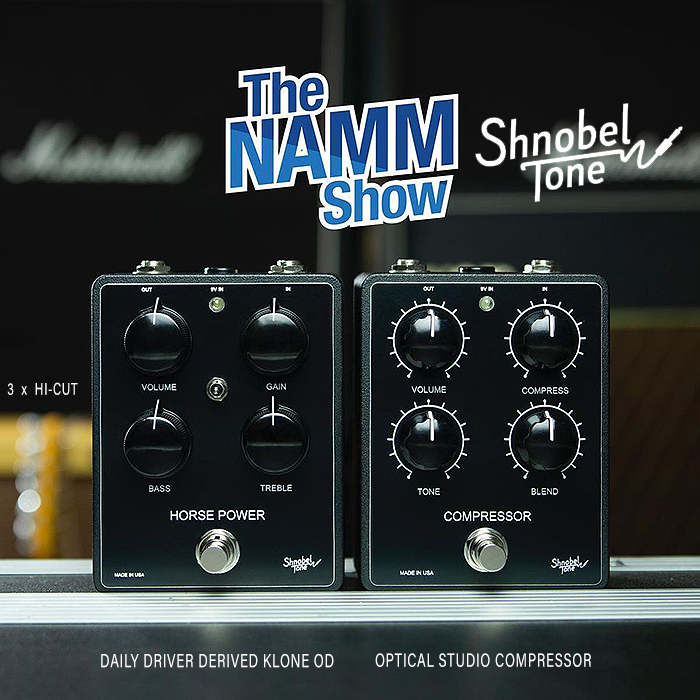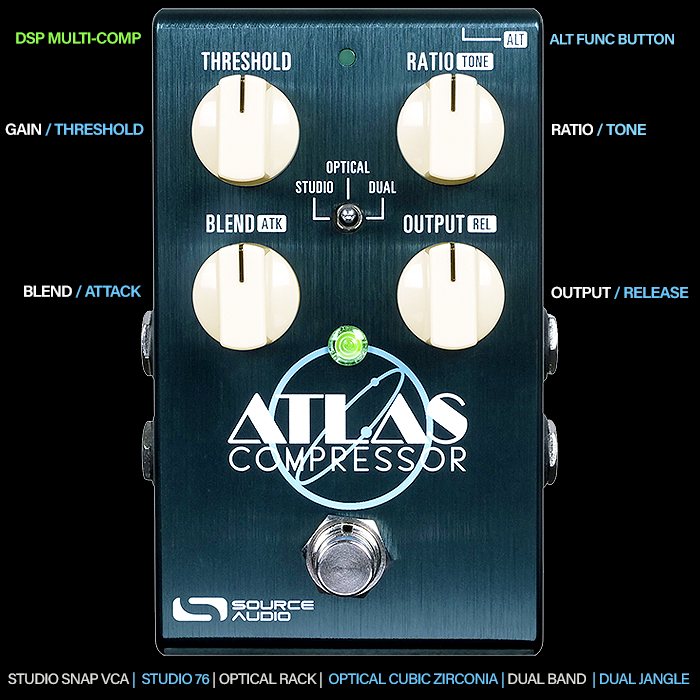Becos FX further perfects its Compact CompIQ Stella Pro Blacmer VCA 'King of Compressors', now in MKII Edition with optional DITOS Transformer DI Out Module
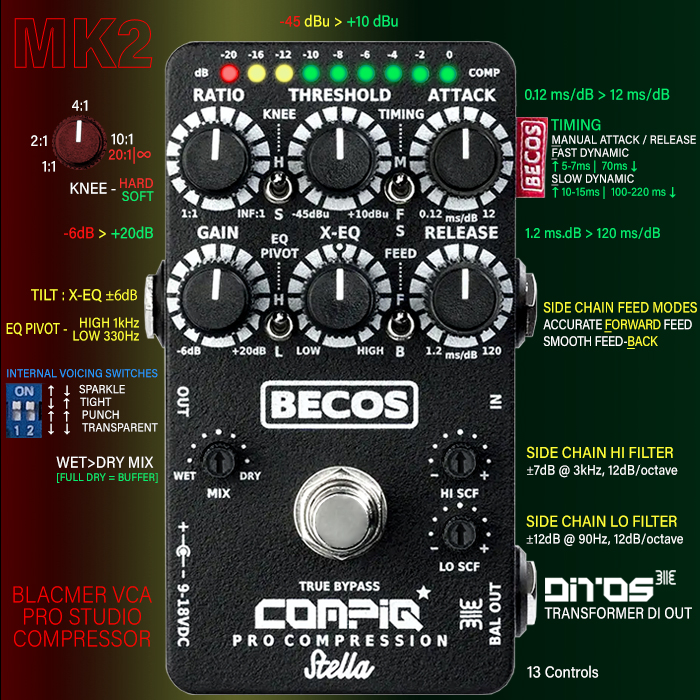
I’ve long championed the CompIQ Stella - which is the closest you can get to a studio rack compressor in pedal format. The Stella is simply the most powerful and tweakable compressor in its category. And I’ve finally got one in the reference collection - many thanks to Becos FX for organising that for me in such a timely manner!
I’ve had my Stella for a couple of weeks or so now, and this will be my first article of a series - a sort of short-term first impressions take. Which I will then be following up on in a couple of months or so - with a more long-term take and including further usage scenarios and insights.
The very first impressions are that this pedal is as surgically precise as compressors can get. We talk of Reverb pedals having a pristine quality to their output, and so very much does this Stella!
I started off with all controls centred per the visual, and then tweaked the top half of the controls into position (I’ve not properly felt the need to tweak the 3 smaller lower knobs yet). I noted initially that the compression most definitely had a punchy character / quality to it, and indeed - the Internal Voicing Dip-Switches were both set to UP, where I typically prefer more Transparency from my compressors, and thus moved both switched to DOWN (Transparent Voicing). I checked the other settings while I was at it - and they very accurately and logically matched their descriptors. So for me the Voicing Switches were one of the first things I needed to adjust - so I’m guessing you’re best of doing that right at the start.

In fact at the start you need to decide whether you wish to play with a more punchy sort of funk style, or rather use the compressor as a somewhat more subtle Tone Enhancer. This determines what Voicing Settings you select, Hard or Soft Knee, Forward Feed or Feed-Back Side Chain Mode, and degree of Wet > Dry Mix. For my preferences this means Transparent, Soft Knee, and smoother Side Chain Feed-Back - with Wet > Dry Mix typically at 50%.
In fact I will share what setting I ended up with, before I explain how I came to set the pedal in that manner, and how I navigated the 13 controls. All those controls can seem a little much at the start - but like my favourite Sinvertek N5 MGAT-1-GA - they have an easy intuitive logic to them, and as long as you approach them in a methodical manner - the pedal is really very easy to operate. You need to make some decisions at the start - and then you just tweak each section in turn - to taste! I've organised the pedal into distinct sections below, in the order of which it makes most sense to tackle them!
The settings I initially landed on are : Ratio @ circa 3:1 (10 o'c), Threshold @ c -25dBu (10 o'c), Attack @ c 3ms/dB, (9 o'c), Knee : Soft, Timing : Manual, Gain @ Middle, X-EQ @ Middle, Release @ c 90ms/dB, (3 o'c), EQ Pivot : High, Feed : Feed-Back (Smooth), Mix @ Middle (untouched), HI SCF @ Middle (untouched), Lo SCF @ Middle (untouched).

Voicing Dip-Switches (Internal)
I recommend you tackle this section first - decide how much or little accentuation you wish the Compressor to make! I tend to prefer Transparent - but each of these has a specific tone-enhancing use. If you have a fairly Dark core signal - you can try hitting it with some Sparkle for instance! For Funk or Bass - you would typically go with Tight or Punch - whichever best suits your rig!
- ↑ ↓ : Sparkle
- ↓ ↑ : Tight
- ↑ ↑ : Punch
- ↓ ↓ : Transparent
Ratio, Threshold & Gain
These are kind of the core Compressor settings - and so I've grouped these together as you tend to tweak them in tandem.
- Ratio / Degree of Compression : 1:1 > 20:1|∞ [mine is set to c 3:1]
- Threshold / Point of Impact : -45dBu > +10dBu [mine is @ -25dBu]
- Gain / Makeup Gain : -6dB > +20dB [mine is in the middle]
[Note that certain degrees of compression limit peak values, and you can get a perceived volume drop which you balance with the Gain knob!]
Knee
Along with the Voicing Dip-Switches - this determines whether the compression comes on more softly or more accentuated.
- Hard / Soft : Compression Onset : Funk / Transparent
[Soft is my choice]
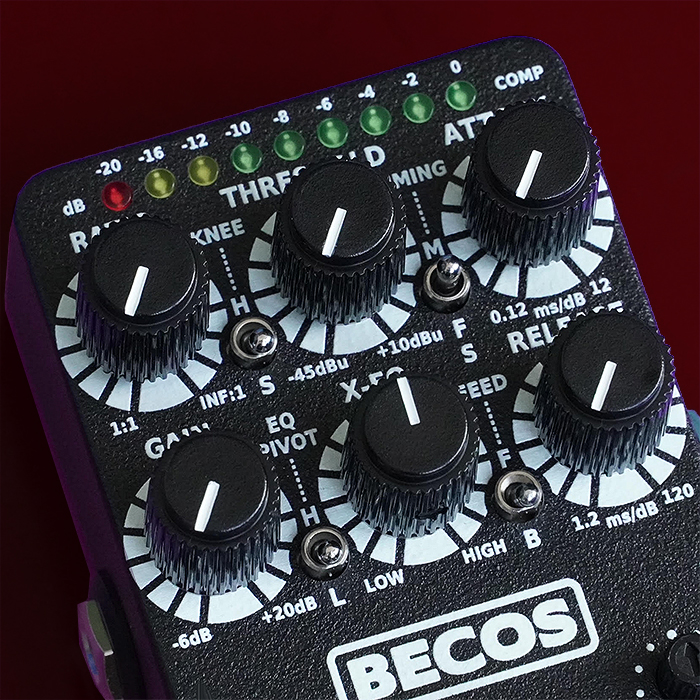
Timing / Attack & Release
The Timing toggle switch selects automatic or manual calibration - if you want quick-and-easy action just deploy either of the Auto Fast or Auto Slow Modes, and if you want absolute precision - you dial in the Attack and Release values Manually! It's great to have options! And the toggle-switch empowers you to change things up very simply and rapidly!
- Manual | Attack ↑ : 0.12ms/dB > 12ms/dB | Release ↓ : 1.2ms/dB > 120ms/dB
- Auto Fast Dynamic : ↑ 5-7ms | ↓ 70ms
- Auto Slow Dynamic : ↑ 10-15ms | ↓ 100-220ms
[I like to use all 3 modes here - while Attack is typical v.fast @ c 3ms/dB, and Release is more sustaining at c 90ms/dB]
Tilting X-EQ & EQ Pivot
EQ Pivot selects High 1kHz Frequency Centre (Guitar) or 300Hz (Bass), and you can then tweak around those core centre frequencies with the main X-EQ dial - which yields a ±6dB Tilt EQ in each direction.
- ±6db Tilt EQ Each way : More Lows CCW, Less Highs / More Highs CW, Less Lows : ±6dB
[mine is set in the middle, I occasionally dial it back a little for a little less brightness]

Side Chain Feed Modes & Filters
As I wanted a softer, more subtler, transparent style of compression, I set the Feed toggle switch to 'Smooth' Feed-Back mode. I didn't feel the need to adjust the HI SCF / LO SCF - those are typically for more specialist applications!
Together they work as a sort of fine-tune section for the Compressor - Surgically Accurate Forward Feed or Smooth Feed-Back, with twin EQ's to ameliorate or accentuate extremes of High and Low Frequencies. Particularly suitable for Bass Players! So you can induce earlier Threshold on certain frequencies, or else exclude those from compression - as fits the circumstances!
- Side Chain Feed Modes : Accurate Forward-Feed / Smooth Feed-Back
- Side Chain Hi Filter : ±7dB @ 3kHz, 12dB/octave
- Side Chain Lo Filter : ±12dB @ 90Hz, 12dB/octave
Wet > Dry Mix
Parallel compression essentially - 50:50 in middle, Full Dry (CW) = Buffer.
This has been set at 50% from the start for me, I've not felt the need to adjust this - although I've experimented a little with it - to gauge its sensitivity.
The Wet/Dry and Side Chain Filters are particularly useful for getting the right Bass sound for various genre applications. Some of the settings are more obviously honed towards Bass use, while the core of the pedal works equally well for Guitar and Bass.

DITOS Transformer DI Out [Option / Add-on]
The DITOS Module is an optional extra - which gives you a parallel simultaneous output - which can go direct to front-of-house, a mixing desk or similar. It runs concomitantly with the main output. This is something that will come more into play in my long-term tests.
You get the option of having this included from the start or fitted later - which involves a slightly higher cost. My advice is to get it from the start (like mine) - even if it's mostly a matter of just-in-case!
Note though that if you do go for the DITOS option you can no longer slot in a 9V Battery to power the pedal - as that cavity will now be occupied by the DITOS Module - so it's a question of one or the other - as fits your circumstances!
The CompIQ Stella in Use
Compared to my various previous compressors, I am more immediately aware of the precision and high fidelity of this device. The tapers / sweeps on each control are even, predictable, and precise. You really get surgical precision here in being able to exactly define the manner of compression you get on the output. 'Pristine' is typically mostly used to describe particularly high quality Reverb algorithms, but it also very much applies here.
Everything here exudes quality and fidelity. And you can deploy this pedal very simply if you wish to - and mostly just using the 3 core Ratio, Threshold and Gain controls. You can leave pretty much everything else in the centre, set Fast or Slow Auto Timing, Hard/Soft Knee, and F or B Side Chain Feed - the pedal takes next to no time to set up in the most basic of fashions.
As I detail in the main body copy - applying all the different settings and options is still relatively straight-forward - you just need to approach it in a methodical manner - as I've detailed. My visual greatly helps in give you all the cues you need to get full up and running in no time!
And of course if this level of Studio Compression is too much for you - Becos FX has two much simpler Mini offerings - the 8-controls CompIQ Mini (€209 | $221 | £179) and the just 4-controls CompIQ Mini One (€165 | $175 | £141) - both utilising the same superior pro Blackmer VCA components as the Stella - centered around the high-performance THAT 4320 Analog Engine®. It's all about what fits into your rig, and with your style of playing - also to a degree as to how much control you want to exert over every aspect of the compression.
To my mind the Stella is the very best Pro Studio Style Pedal Compressor you can currently get - there really is nothing else at this level / form factor and degree of surgical precision - really nothing out there is more comprehensive and finely controllable than the CompIQ Stella!
Key Features
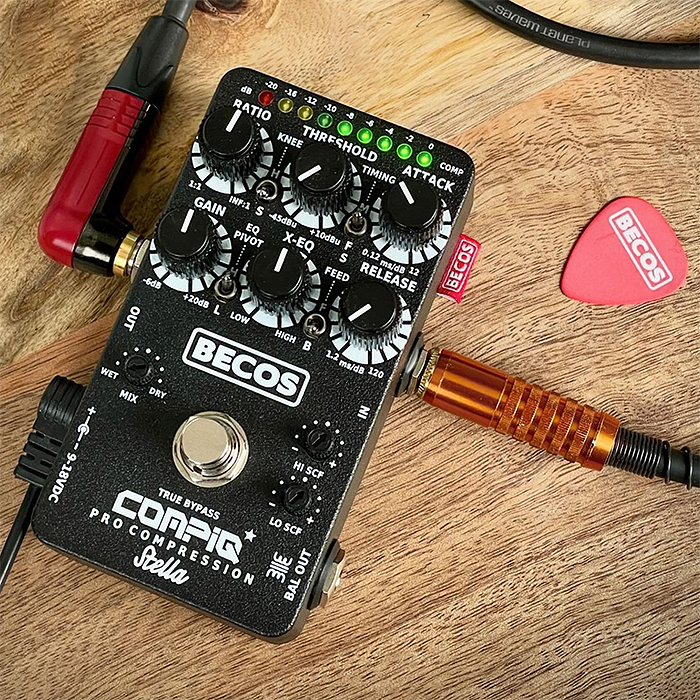
- Full analog circuit with true by-pass
- True RMS-level detector for accurate input signal measurement
- High-performance Blackmer® VCA compression engine
- Based on THAT 4320 Analog Engine®
- Optional DITOS board for transformer-coupled balanced output (10KΩ impedance)
- Feed Forward/Feed-back compression modes
- Ratio 1:1 to infinite:1 (limiter)
- Threshold -45dBu to +10dBu
- Make-up Gain -6dB to +20dB
- Soft/Hard compression knee selection
- Manual timing: attack 0.12-12 ms/dB of gain reduction, release 1.2-120 ms/dB of gain reduction
- Fast/Slower dynamic auto attack and release timing with hold for peaks over the threshold
- X-EQ with selectable frequency pivot 330Hz for bass instrument or 1KHz for guitar or other applications
- Voicing: Flat, Spark, Tight, Punch (internal DIP-switch selectable)
- Lows/Highs variable side-chain filter with boost & cut around 90Hz and 3kHz
- Dry/Wet mix
- 8-LEDs gain reduction meter
- High-end quality Burr-Brown FET audio ICs, low tolerance metal-film resistors, Panasonic, Kemet, Cornell Dubilier plastic film audio capacitors, Gold-plated multi-layers PCB, Gold-plated micro-switches
- Genuine Hammond black-powdered aluminum enclosure
- 3-year warranty (direct to manufacturer, international, transferable)
- Runs on standard 9V internal battery or 9-18 V DC external power supply (not included), center negative, 12mm long barrel plug
- Current consumption with DITOS board: < 43mAh @ 9VDC; < 52mAh @ 12VDC; < 72mAh @ 18VDC
- Current consumption without DITOS board: < 35mAh @ 9VDC; < 44mAh @ 12VDC; < 63mAh @ 18VDC
- Dimensions : 11,2 × 6,9 × 5,1 cm
- Weight : 0.26g
- Hand-assembled in Vienna, Austria
- RRP : €309 | $330 | £264 with DITOS / €279 | $297 | £240 without DITOS
Order the CompIQ Stella from the Becos FX Webstore
All these Becos FX Pro CompIQ Compressors are made and assembled in Vienna Austria, and available from the Becos FX Webstore.
The CompIQ Stella is €279 | $297 | £240 without DITOS Module, €309 | $330 | £264 with the DITOS Transformer DI Module fitted from the start.
Note that it's more expensive to have the DITOS Module addition carried out later - which is why I recommend having it onboard from the start, even though you do lose the ability to power the pedal from a 9V battery if you go with the DITOS option! You can only have the DITOS or the Battery Option, never both!

Demos

